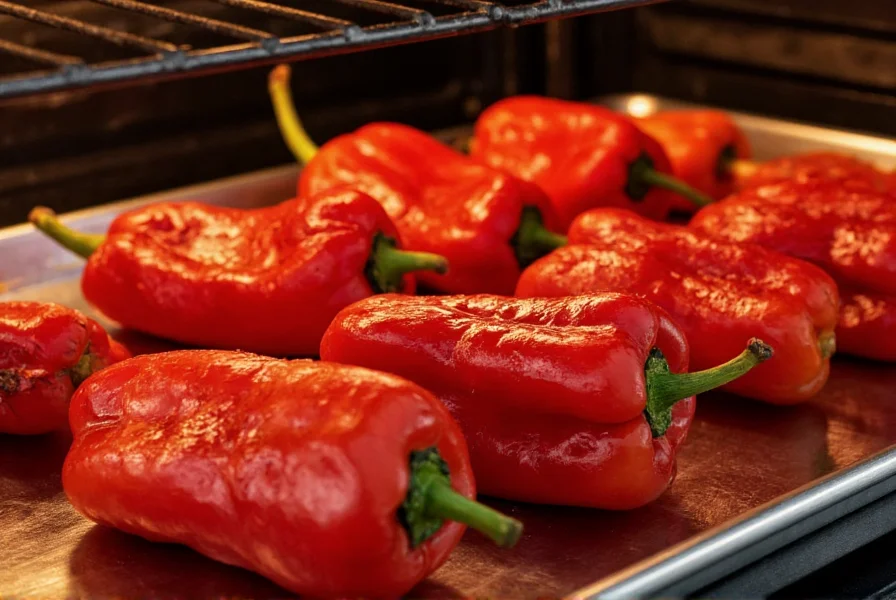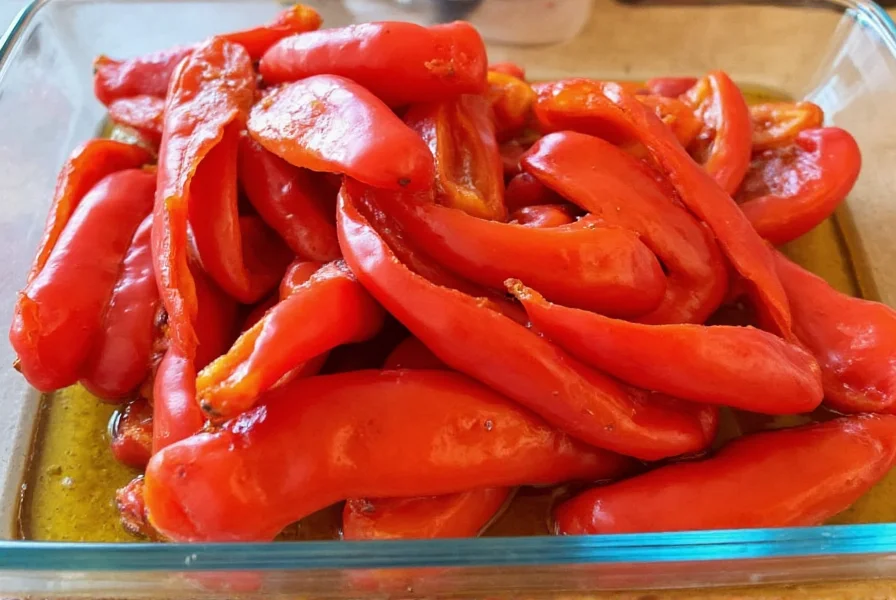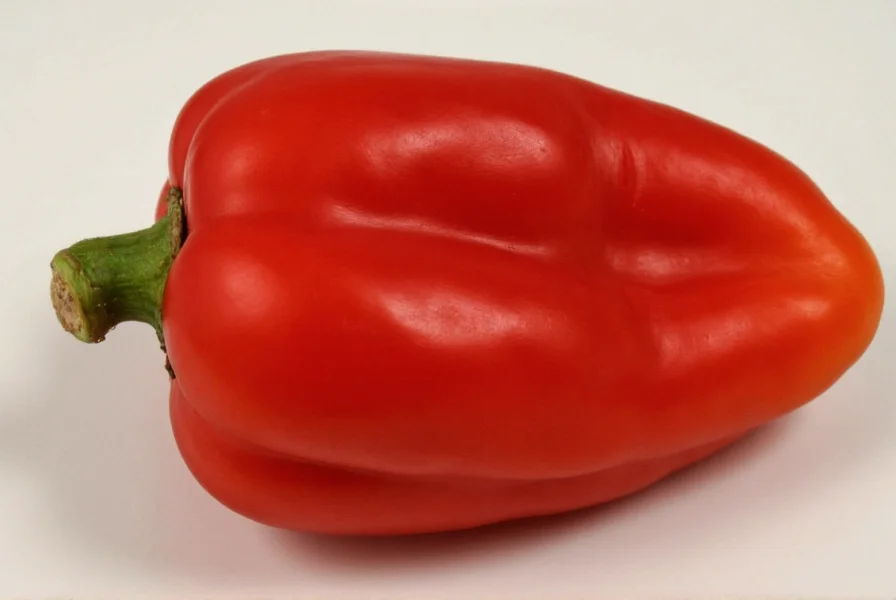Roasting red peppers transforms their flavor from slightly bitter to deeply sweet and smoky, making them versatile for sauces, salads, sandwiches, and dips. Whether you're a beginner or looking to refine your technique, mastering this kitchen skill opens up endless culinary possibilities. This guide covers four reliable methods with professional tips you won't find elsewhere.
Why Roast Red Peppers?
Raw red peppers contain tough cellulose that can be difficult to digest. The roasting process breaks down these fibers while caramelizing natural sugars. According to culinary research, roasting increases the bioavailability of lycopene and other antioxidants by up to 40% compared to raw consumption. The smoky depth added through controlled charring creates complex flavor compounds that elevate simple dishes.
4 Proven Methods for Roasting Red Peppers
Each technique offers unique advantages depending on your equipment and desired outcome. Choose the method that best fits your kitchen setup:
| Method | Time Required | Best For | Char Level Control |
|---|---|---|---|
| Broiler | 15-20 minutes | Quick indoor preparation | ★★★★☆ |
| Oven Roasting | 30-40 minutes | Larger batches | ★★★☆☆ |
| Stovetop | 10-15 minutes | Authentic smoky flavor | ★★★★★ |
| Grill | 12-18 minutes | Summer cooking, outdoor meals | ★★★★☆ |
Broiler Method: Fastest Indoor Technique
Perfect for weeknight cooking when time matters. Position oven rack 4-6 inches below heating element and preheat broiler on high. Place whole peppers on a foil-lined baking sheet. Broil 5-7 minutes per side, turning with tongs until completely blackened. The key to how to roast red peppers in the oven successfully is maintaining consistent distance from heat source.

Stovetop Technique: Authentic Flavor Development
For the best way to char red peppers on stove, use a gas burner. Place whole peppers directly on grate over medium flame. Rotate every 2-3 minutes using metal tongs until evenly blackened (10-15 minutes total). This direct flame contact creates complex smoke compounds that enhance flavor depth. Electric stove users can achieve similar results with a cast iron skillet over high heat.
The Critical Steaming Step
After charring, proper steaming makes how to peel roasted red peppers effortless. Transfer blackened peppers to a glass or ceramic bowl (avoid plastic which can impart flavors), cover tightly with plastic wrap, and let rest 15-20 minutes. This creates steam that loosens the skin from the flesh. Never skip this step - attempting to peel immediately results in torn flesh and wasted pepper.
Peeling Perfection: Professional Technique
Start peeling from the stem end where skin naturally separates. Use your fingers to gently pull away charred skin in large sections. For stubborn spots, a soft vegetable brush works better than a knife which can damage the tender flesh. Place peeled peppers in a bowl to catch juices - this flavorful liquid enhances sauces and dressings. Properly peeled peppers should maintain their structural integrity without excessive tearing.
Storage Guidelines: Maximizing Freshness
Understanding storing roasted red peppers properly extends their shelf life significantly. Store in airtight container with 1-2 tablespoons of olive oil (which preserves flavor better than water) for up to 5 days refrigerated. For longer storage, freeze in single layers on parchment paper before transferring to freezer bags - they'll maintain quality for 9-12 months. Never store roasted peppers in their own liquid as this accelerates texture breakdown.
Avoid These Common Roasting Mistakes
Many home cooks make these critical errors that compromise results:
- Insufficient charring - partial blackening makes peeling difficult and leaves bitter skin remnants
- Over-steaming - exceeding 20 minutes creates mushy texture
- Peeling under running water - washes away valuable flavor compounds
- Using serrated knives - damages delicate flesh during peeling
- Storing in metal containers - causes flavor degradation through chemical reactions
Creative Uses for Roasted Red Peppers
Move beyond basic salads with these professional applications:
- Blend into aioli for sandwiches and burgers
- Add to pizza sauce for depth of flavor
- Chop finely for omelets and frittatas
- Layer in lasagna between cheese and pasta
- Process into vibrant pasta sauces
- Create a stunning tartare topping for fish
For roasted red pepper recipes that shine, pair with complementary flavors like garlic, smoked paprika, balsamic vinegar, and fresh herbs. The natural sweetness balances beautifully with acidic components.
Seasonal Considerations
Fall and winter peppers contain more sugar due to cooler growing temperatures, creating richer caramelization. Summer peppers have higher water content - reduce roasting time by 2-3 minutes to prevent sogginess. Always select firm peppers with smooth skin and deep color for best results. Avoid waxed peppers commonly found in supermarkets as the coating prevents proper charring.

Conclusion
Mastering how to roast red peppers transforms this simple vegetable into a kitchen powerhouse. The technique requires attention to detail but delivers restaurant-quality results with minimal equipment. Whether you're preparing a quick weeknight meal or crafting an impressive dish for guests, perfectly roasted peppers add professional flair to any recipe. Remember that consistent heat application, proper steaming, and careful peeling make the difference between good and exceptional results.
Frequently Asked Questions
Can I roast red peppers without blackening the skin?
While possible, skipping the charring step misses the primary flavor benefit of roasting. The Maillard reaction during charring creates complex flavor compounds that simple cooking cannot replicate. For milder flavor, reduce charring time but maintain some blackening for proper skin removal.
Why do my roasted peppers taste bitter?
Bitterness usually indicates insufficient steaming time. The 15-20 minute resting period allows bitter compounds in the charred skin to dissipate. Peeling too soon traps these compounds in the flesh. Also ensure you're removing all blackened skin fragments, as residual bits contribute bitterness.
How long does the entire roasting process take?
From start to finish, roasting red peppers takes 30-45 minutes: 15-20 minutes for charring, 15-20 minutes for steaming, and 5-10 minutes for peeling. Active preparation time is only 10-15 minutes, with the rest being hands-off resting time. The how long to roast red peppers question depends on method - stovetop is fastest at 25 minutes total.
Can I roast multiple peppers at once?
Yes, but avoid overcrowding. When roasting in oven or on grill, space peppers evenly with room for air circulation. For stovetop method, work in batches of 2-3 peppers maximum to maintain consistent heat exposure. Overcrowding creates steam pockets that prevent proper charring and lead to uneven results.
What's the difference between roasted and grilled red peppers?
Grilling is a roasting method that uses direct flame, creating more pronounced char marks and smoky flavor. Oven roasting provides more even, controlled charring. Both techniques fall under 'roasting' broadly, but grill-roasted peppers have distinctive crosshatch marks and intensified smokiness that works well in Mediterranean dishes.











 浙公网安备
33010002000092号
浙公网安备
33010002000092号 浙B2-20120091-4
浙B2-20120091-4